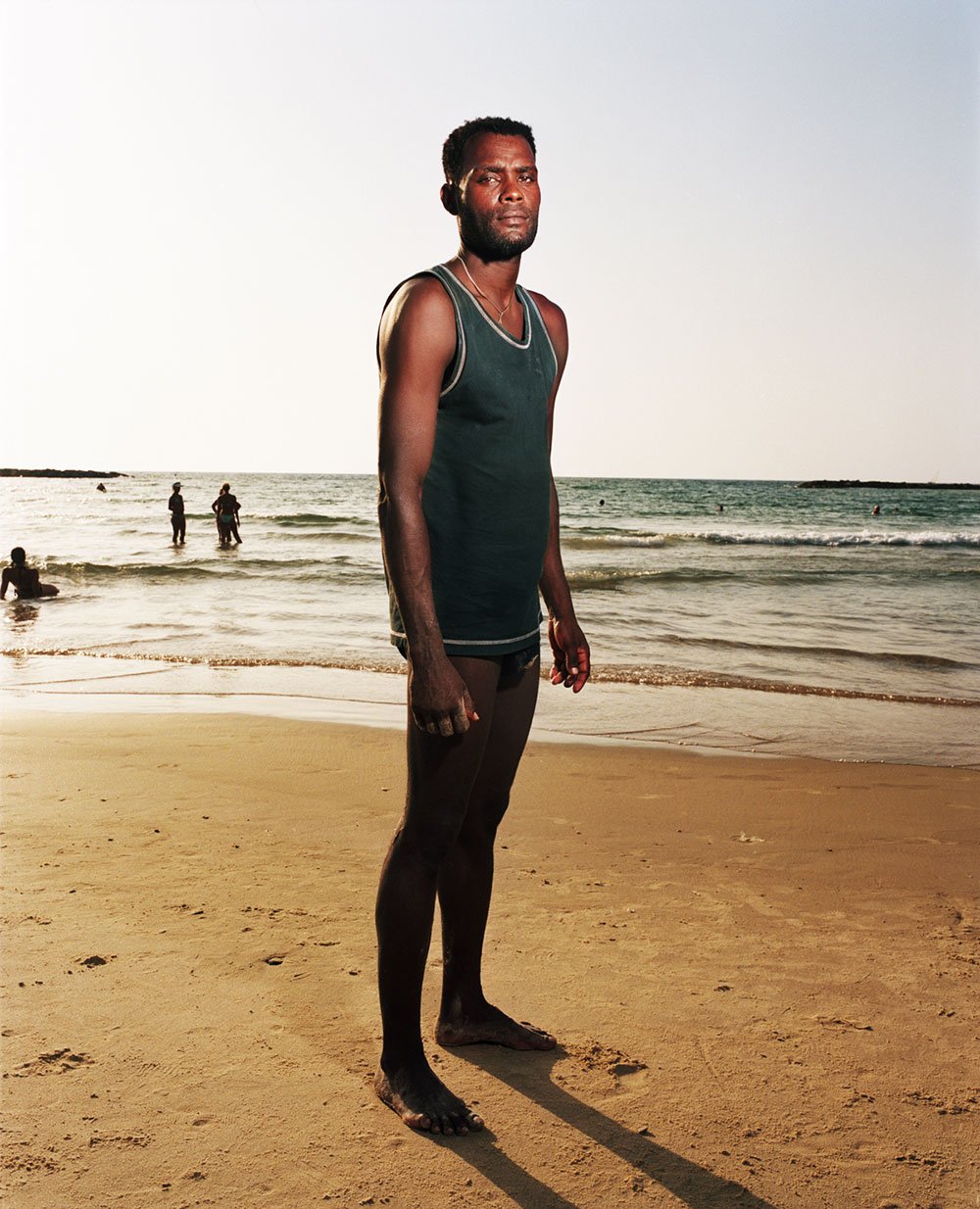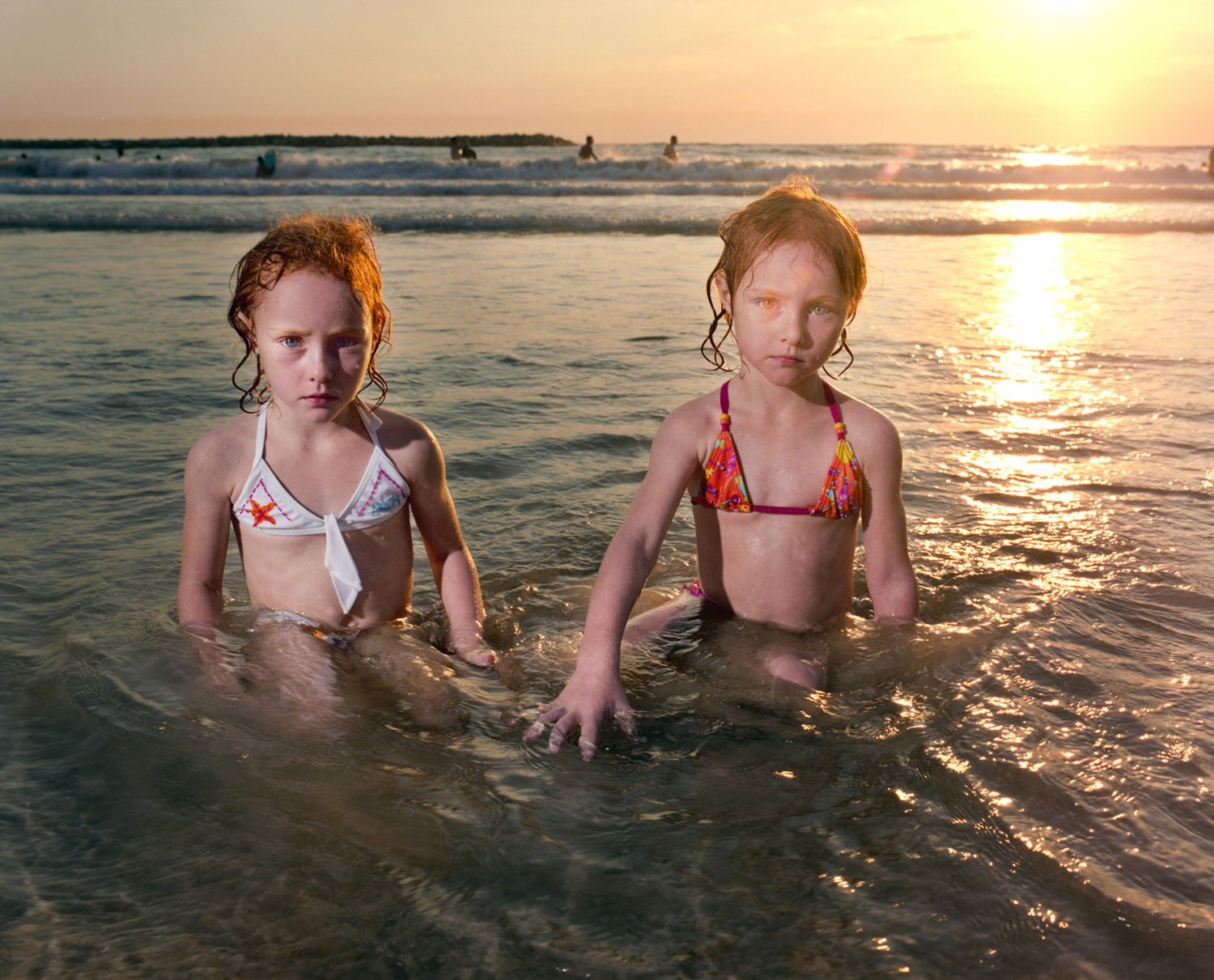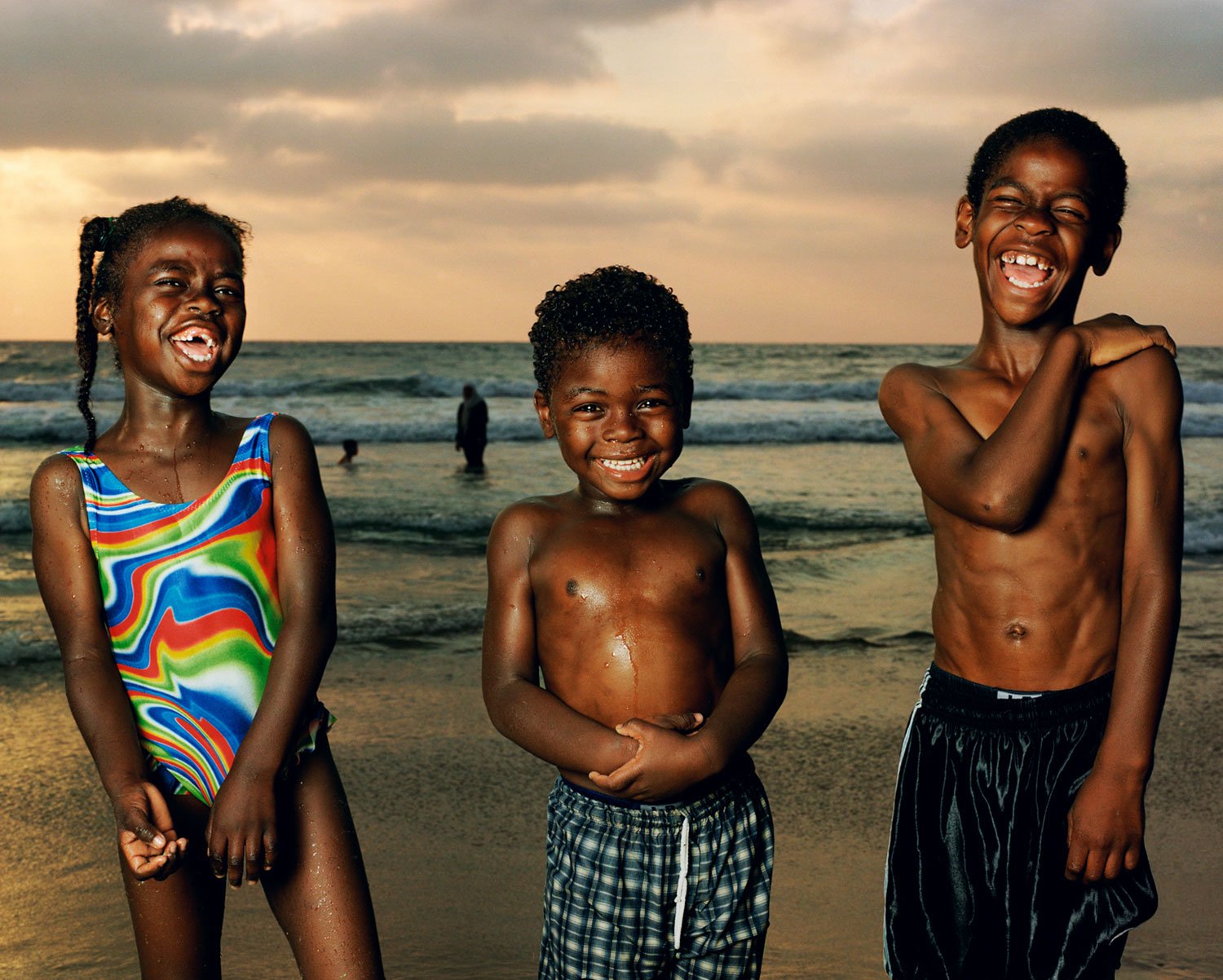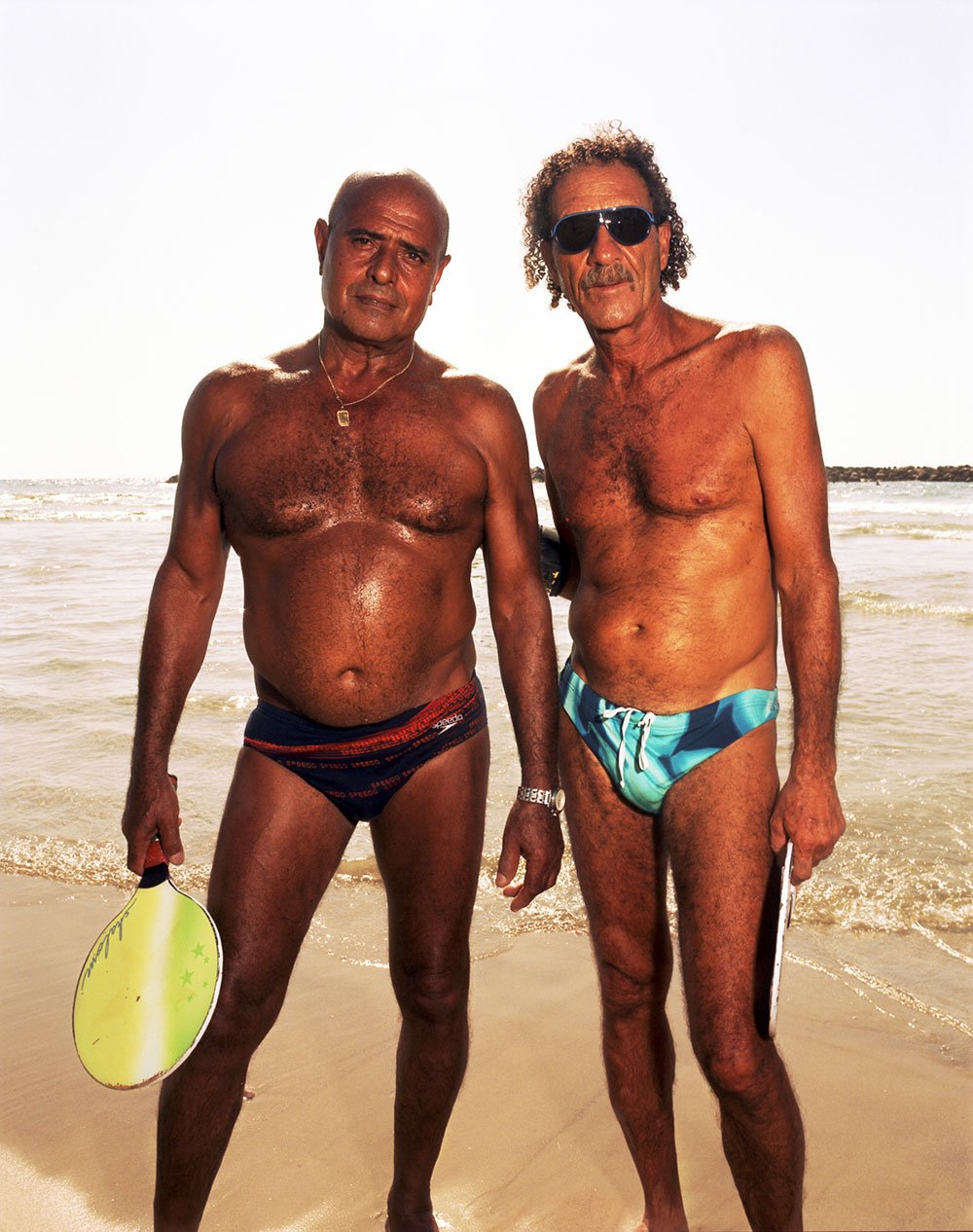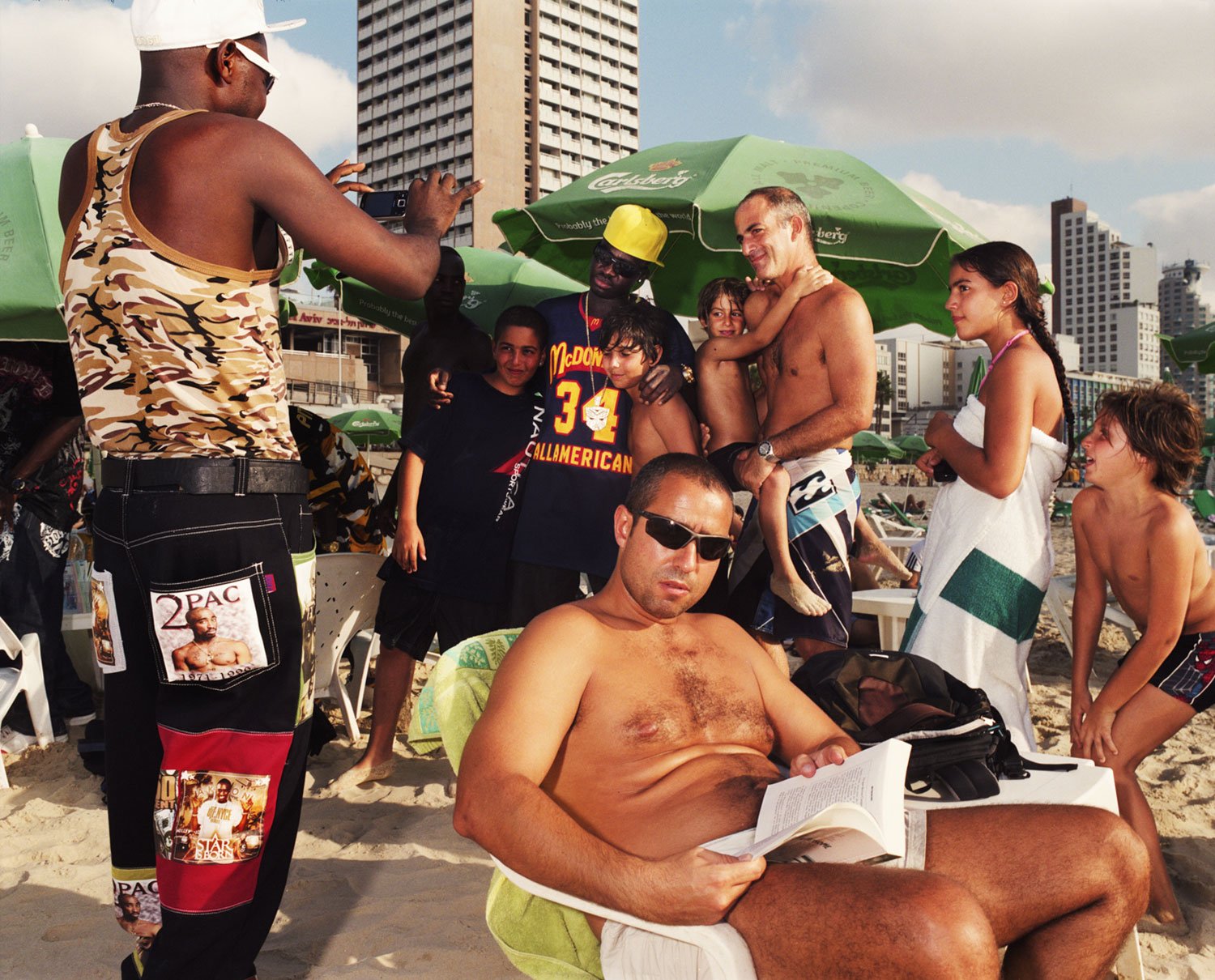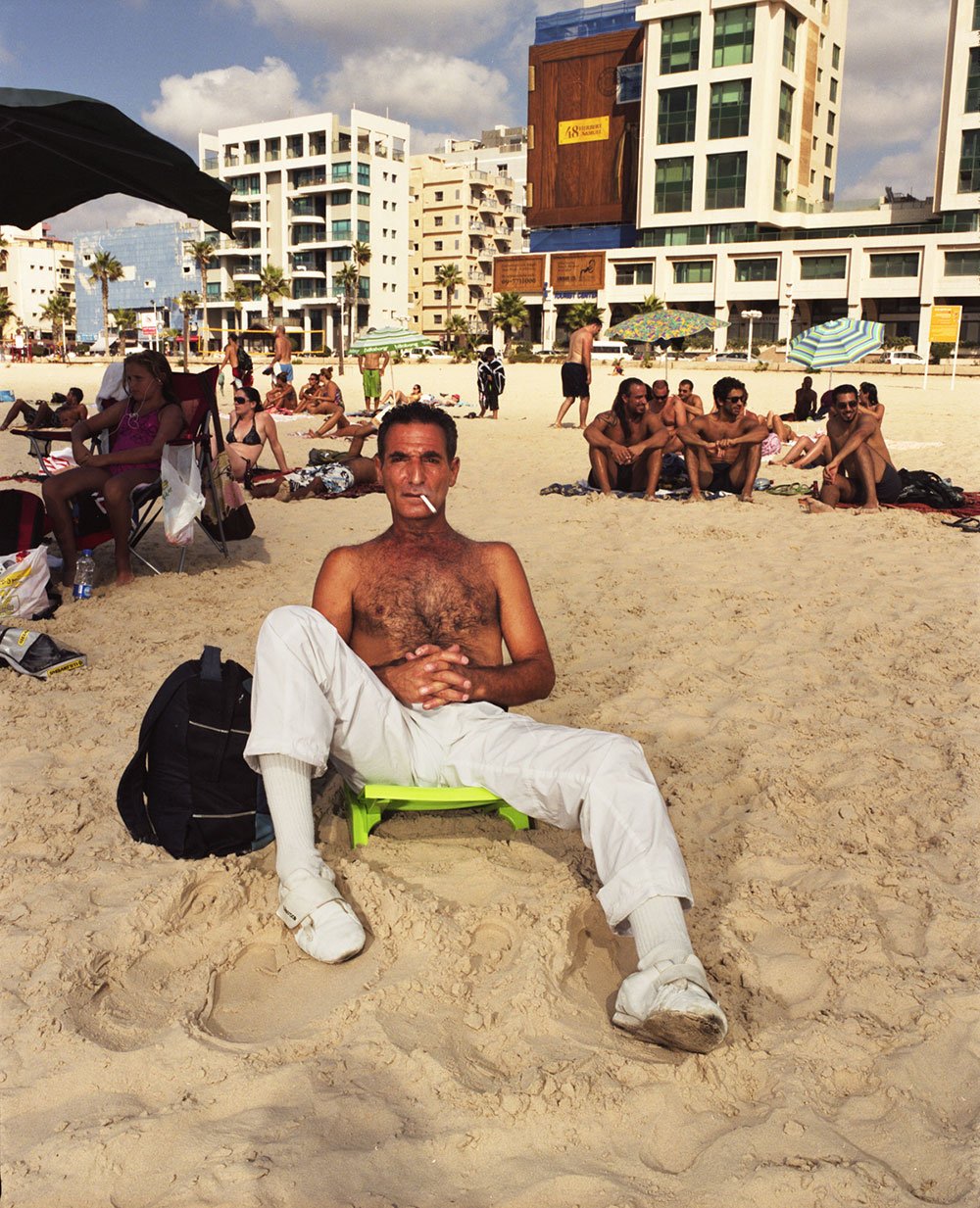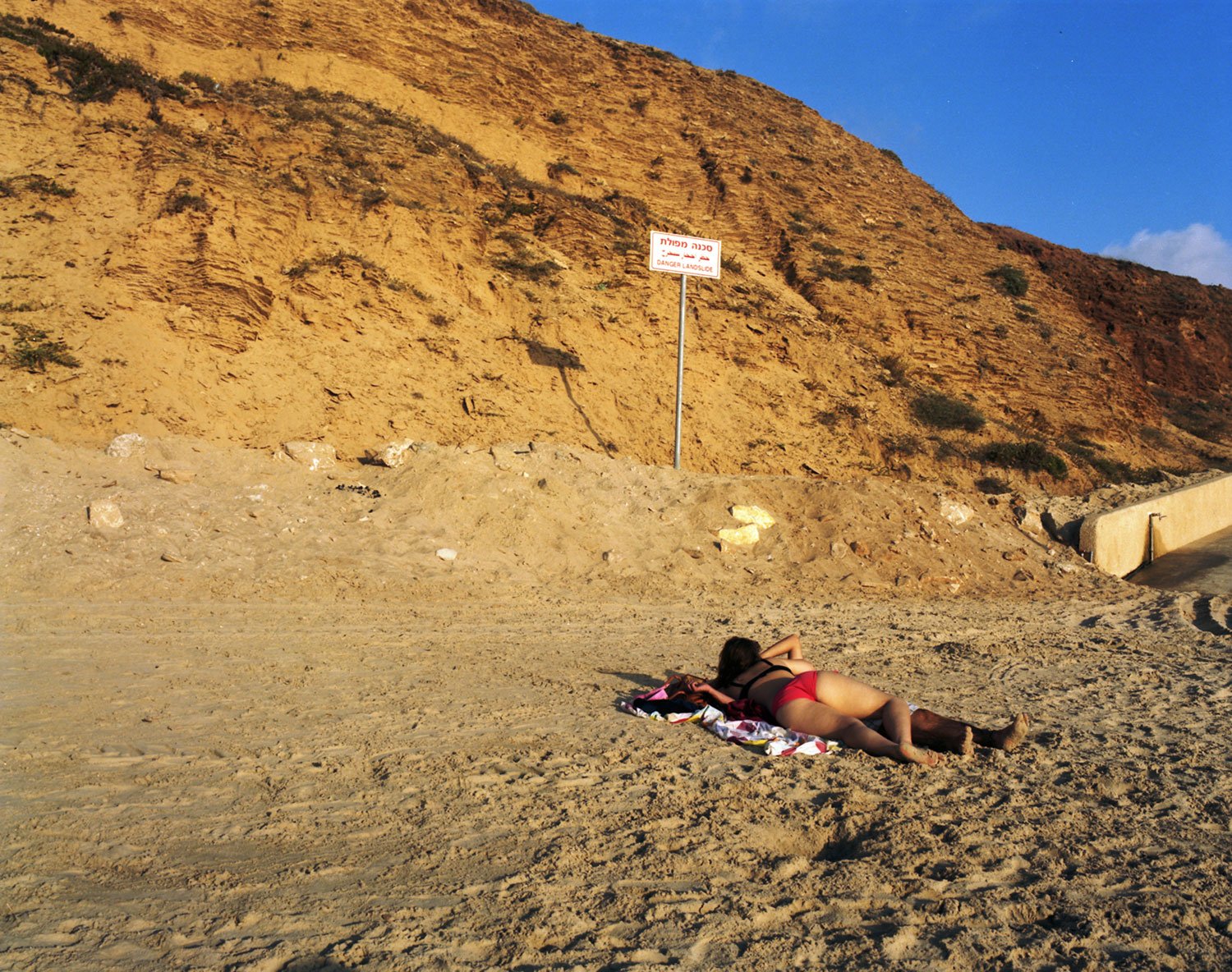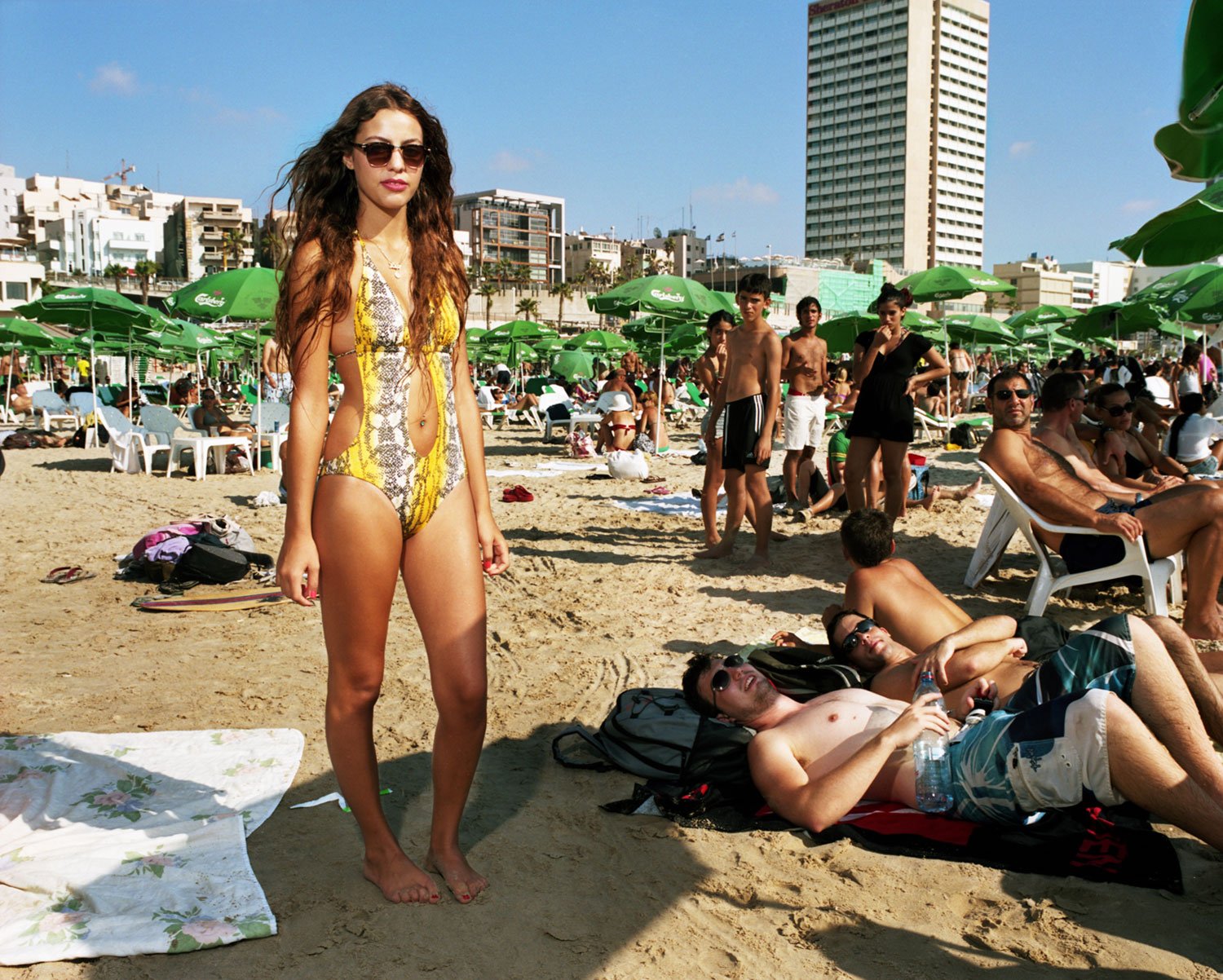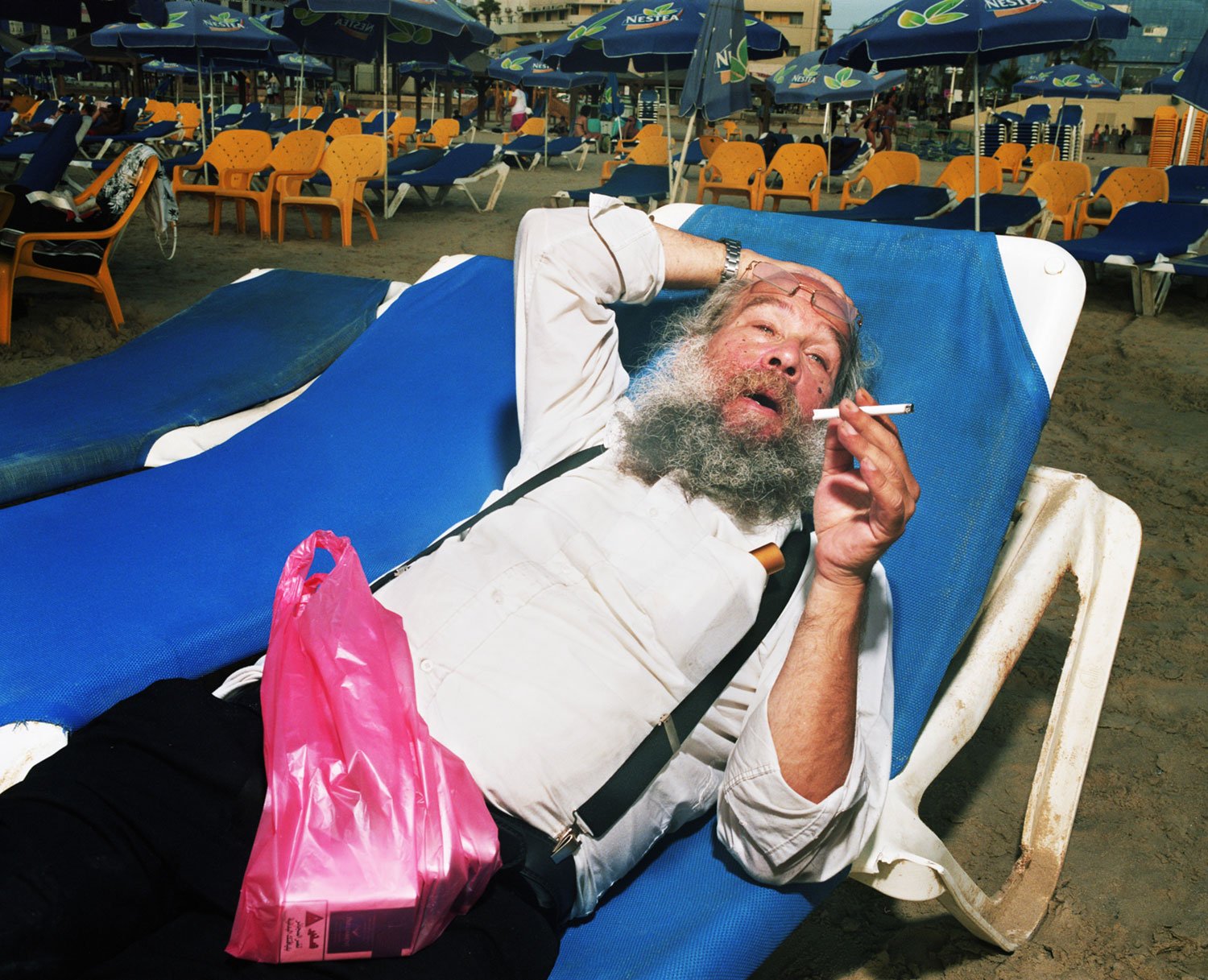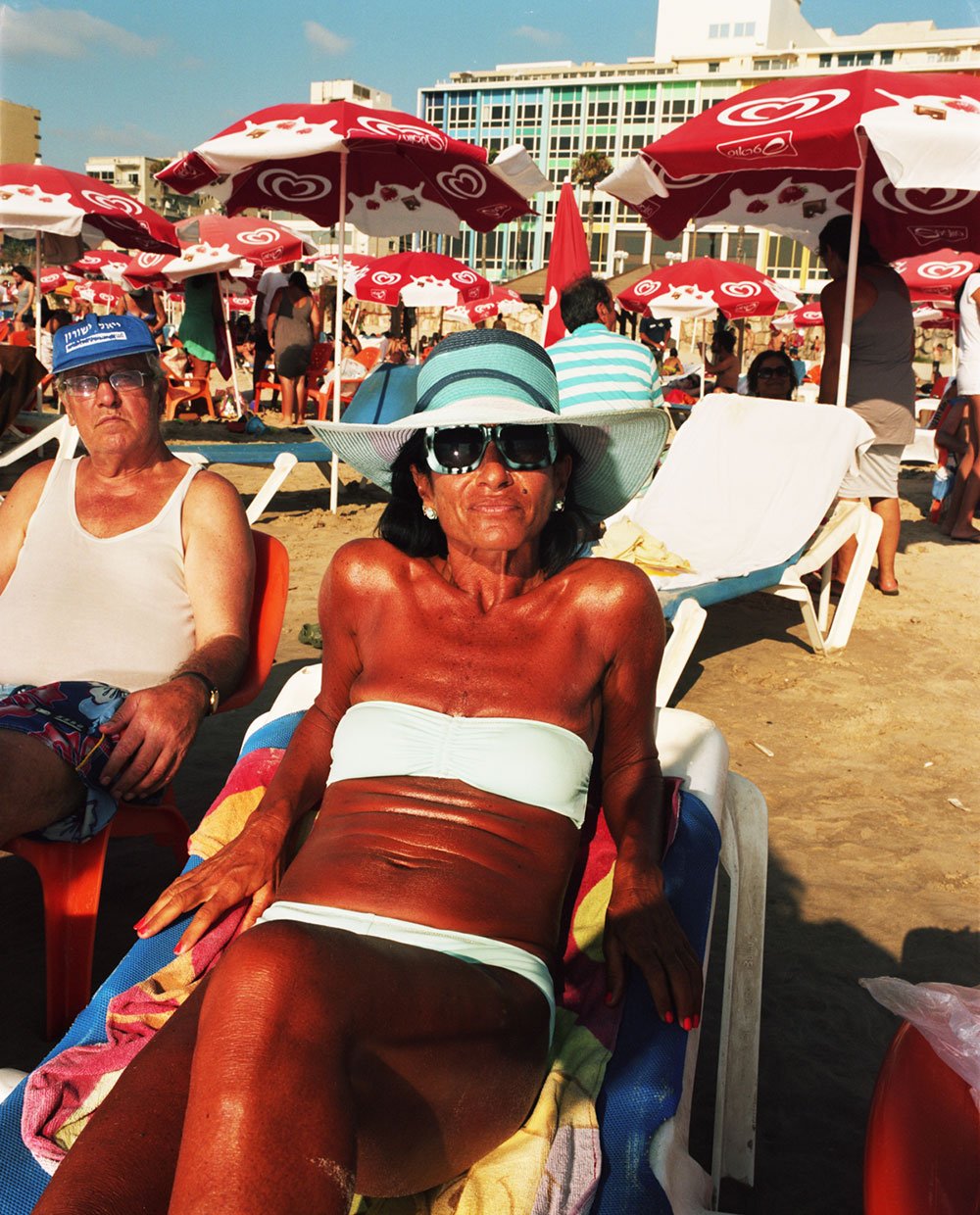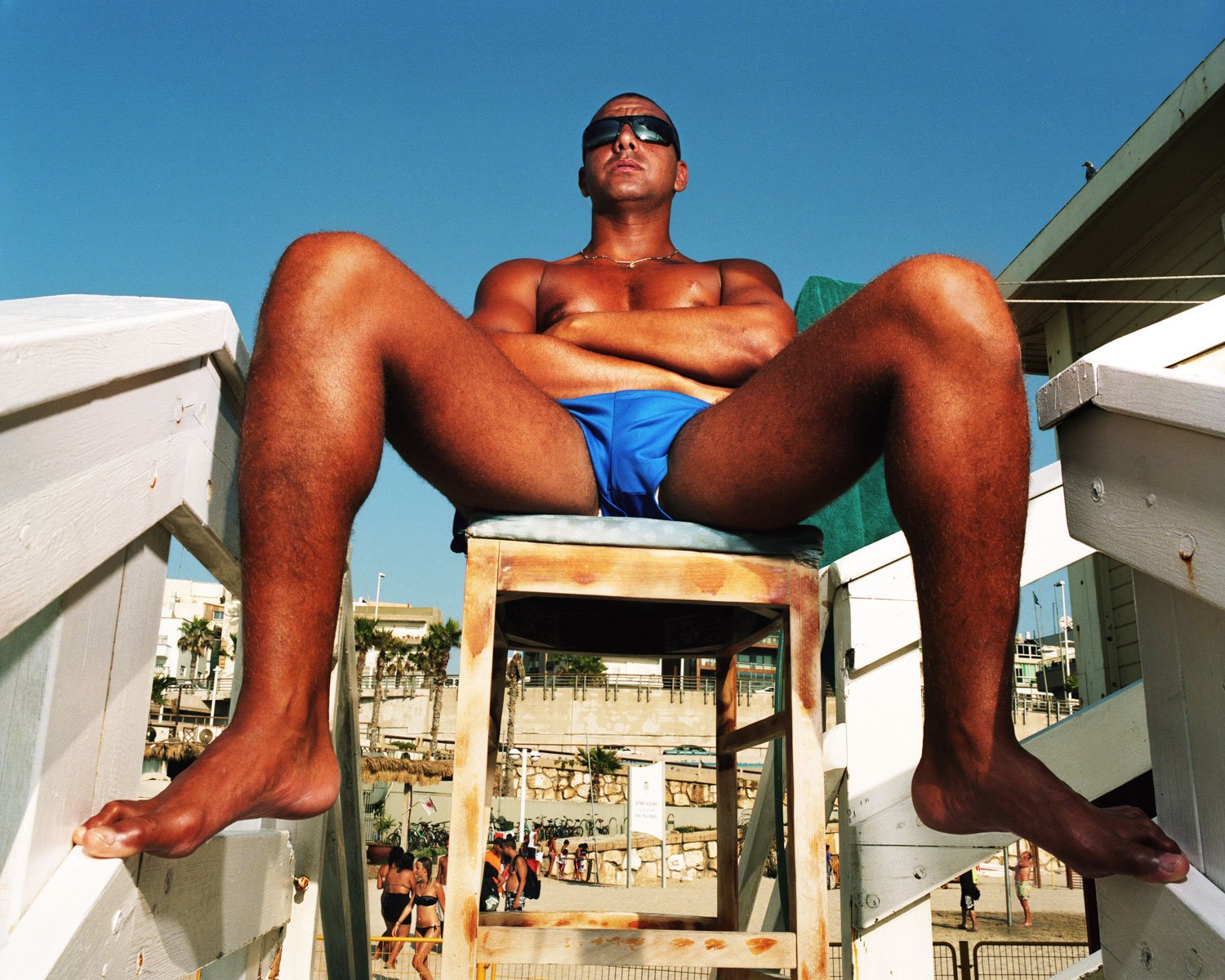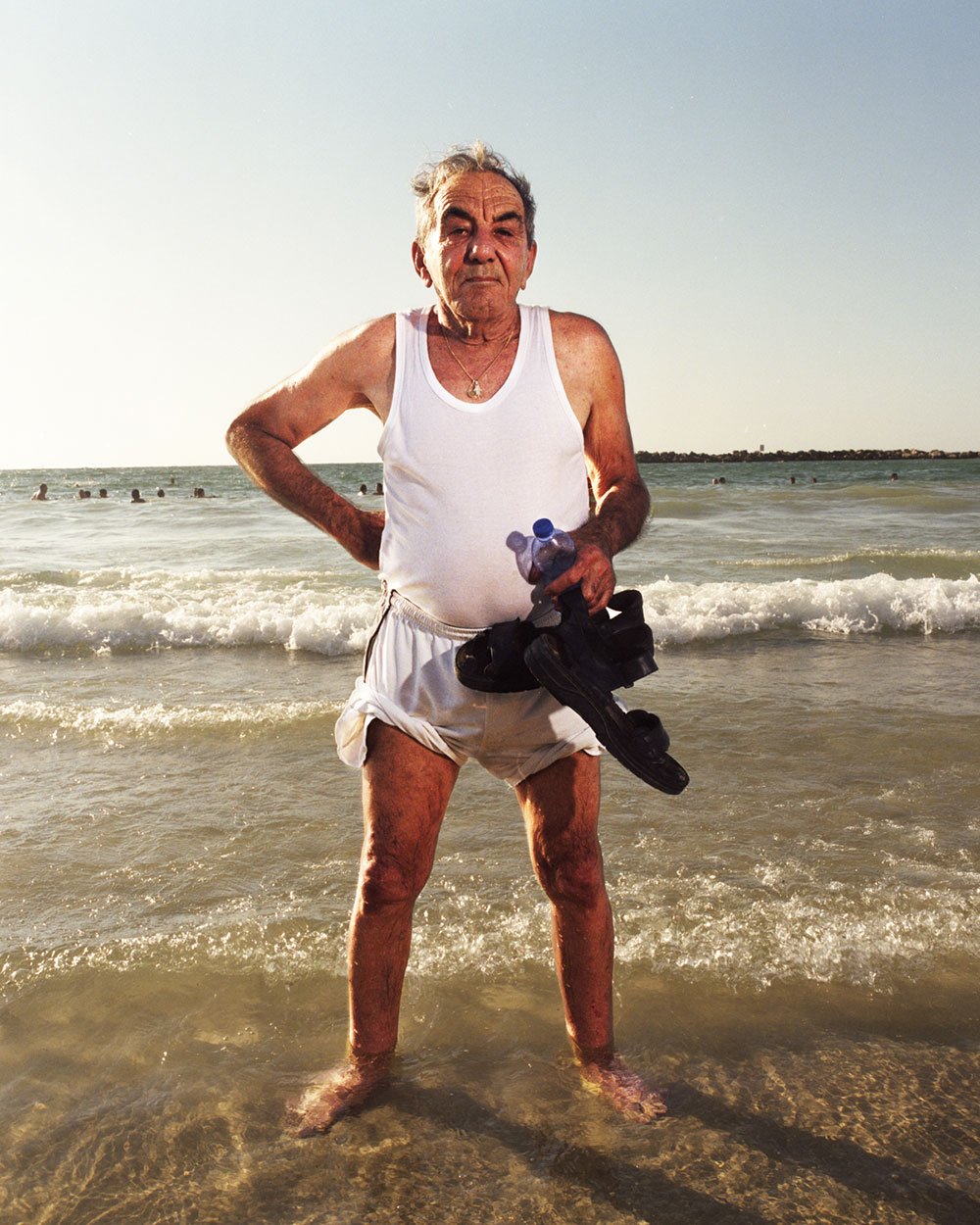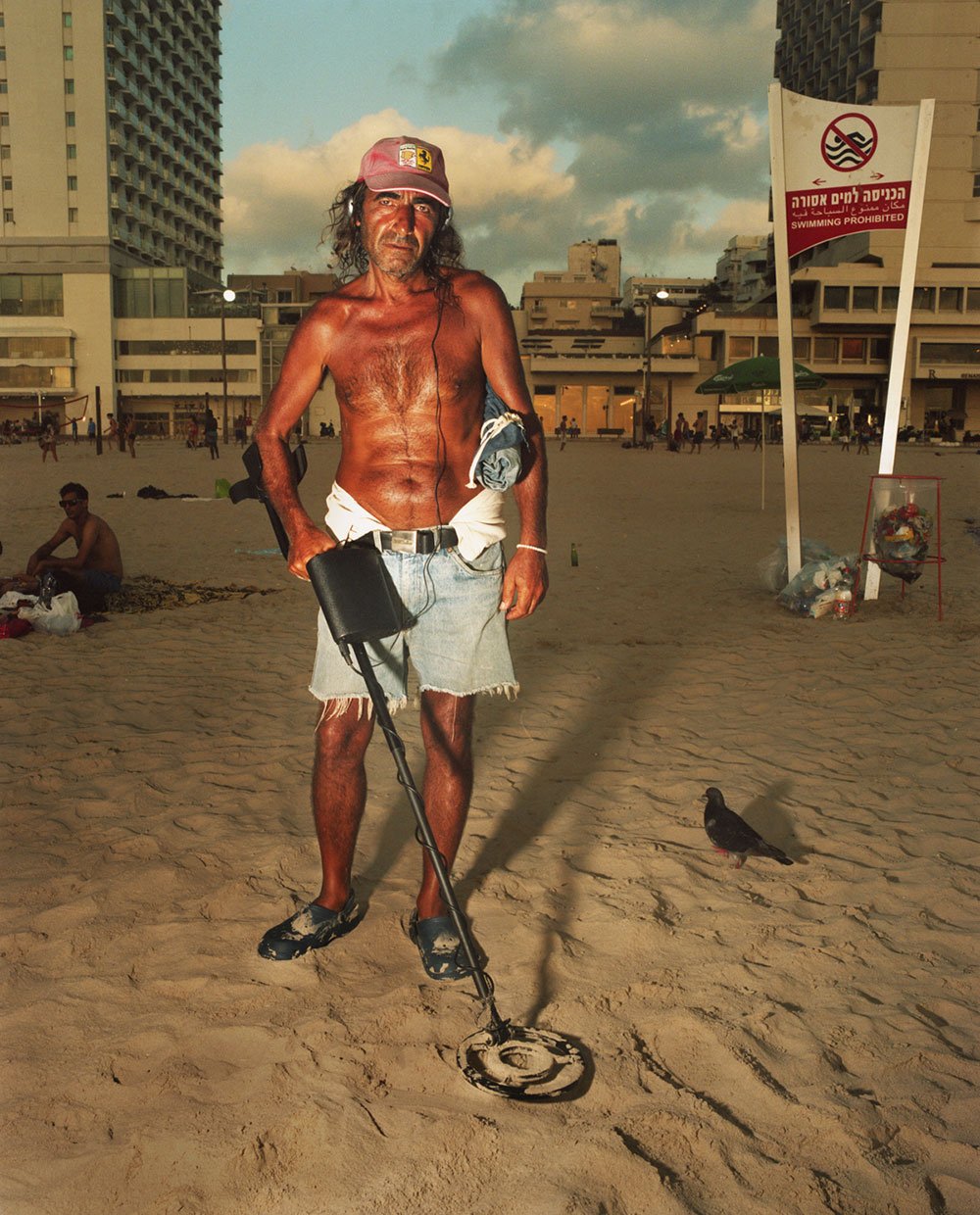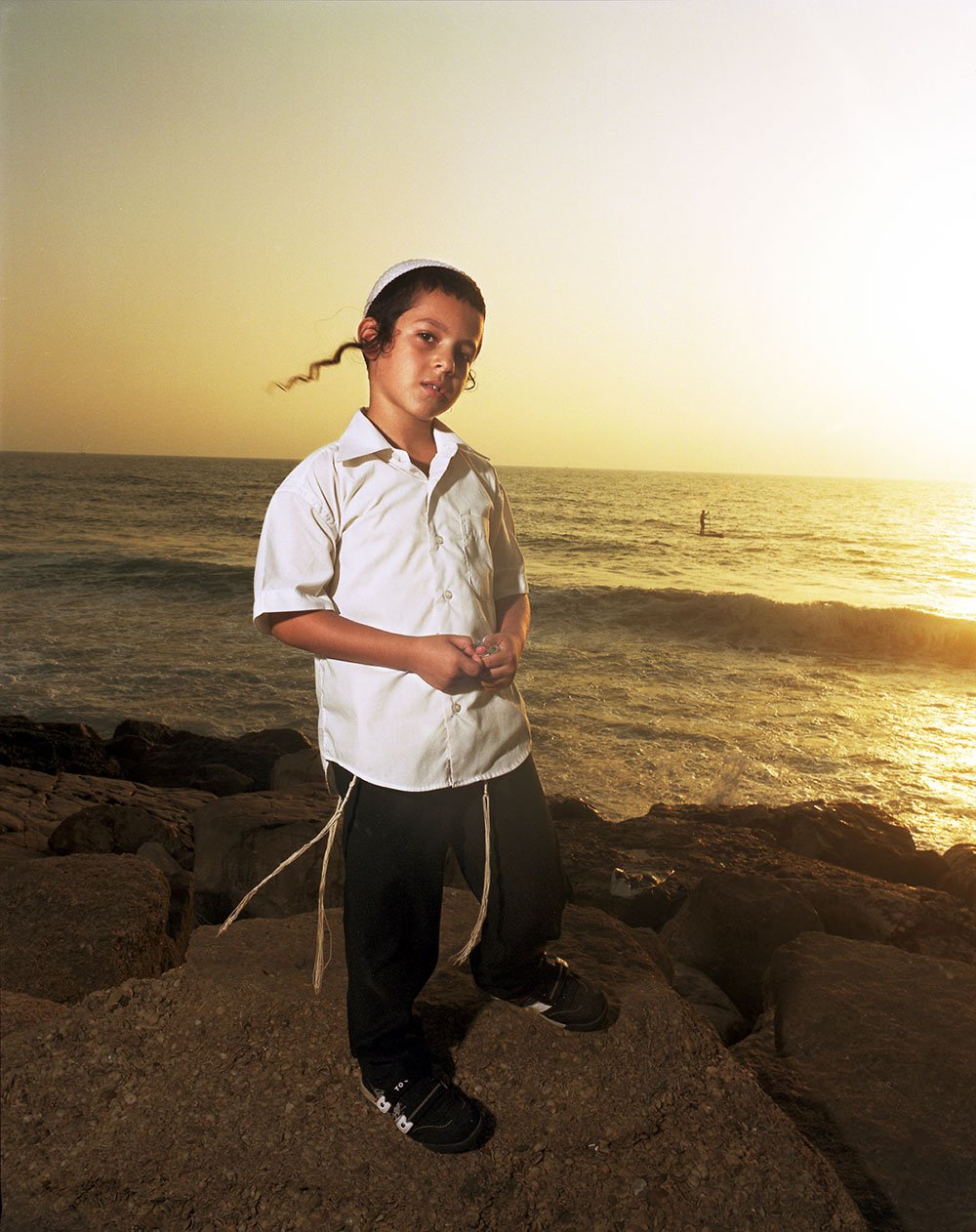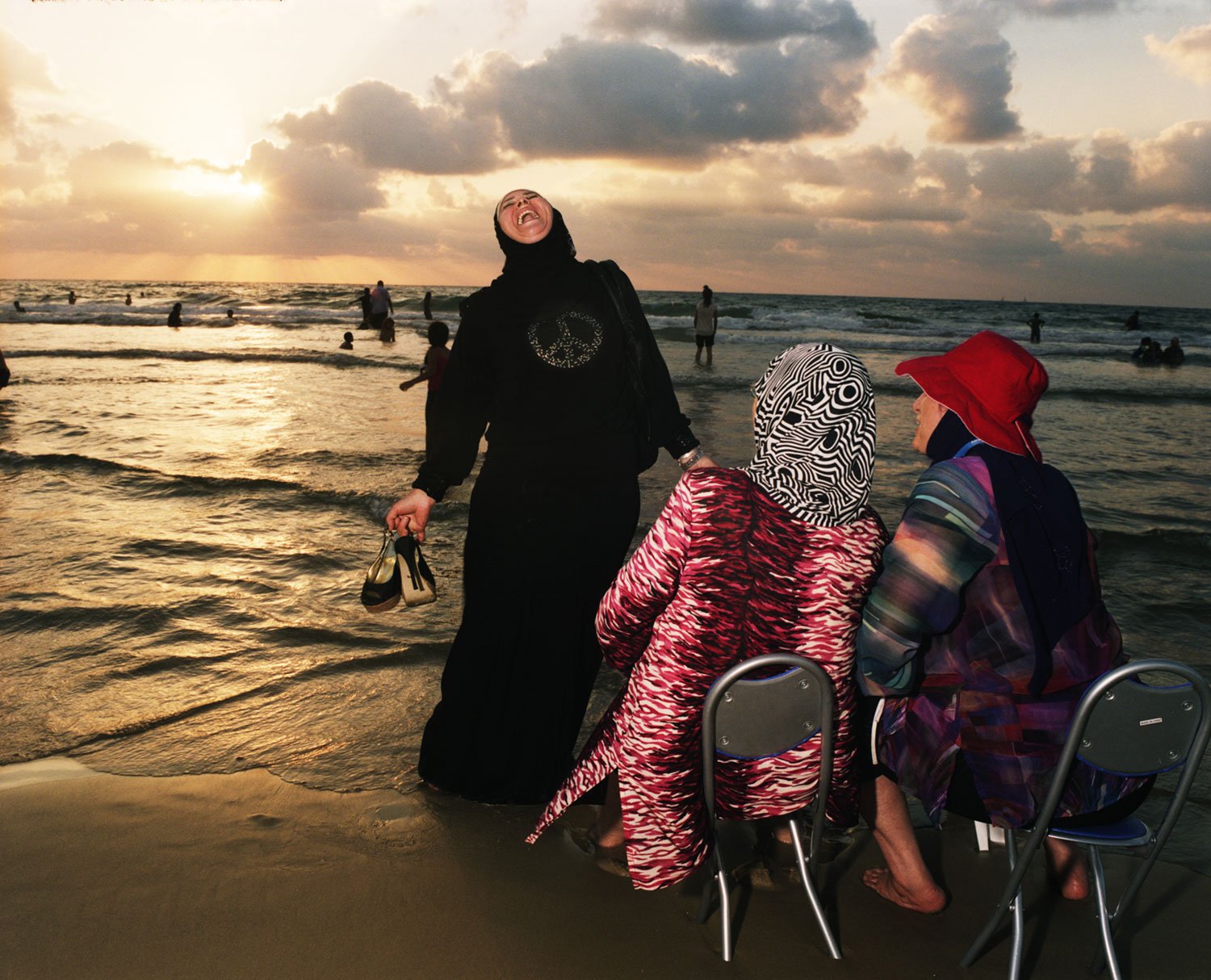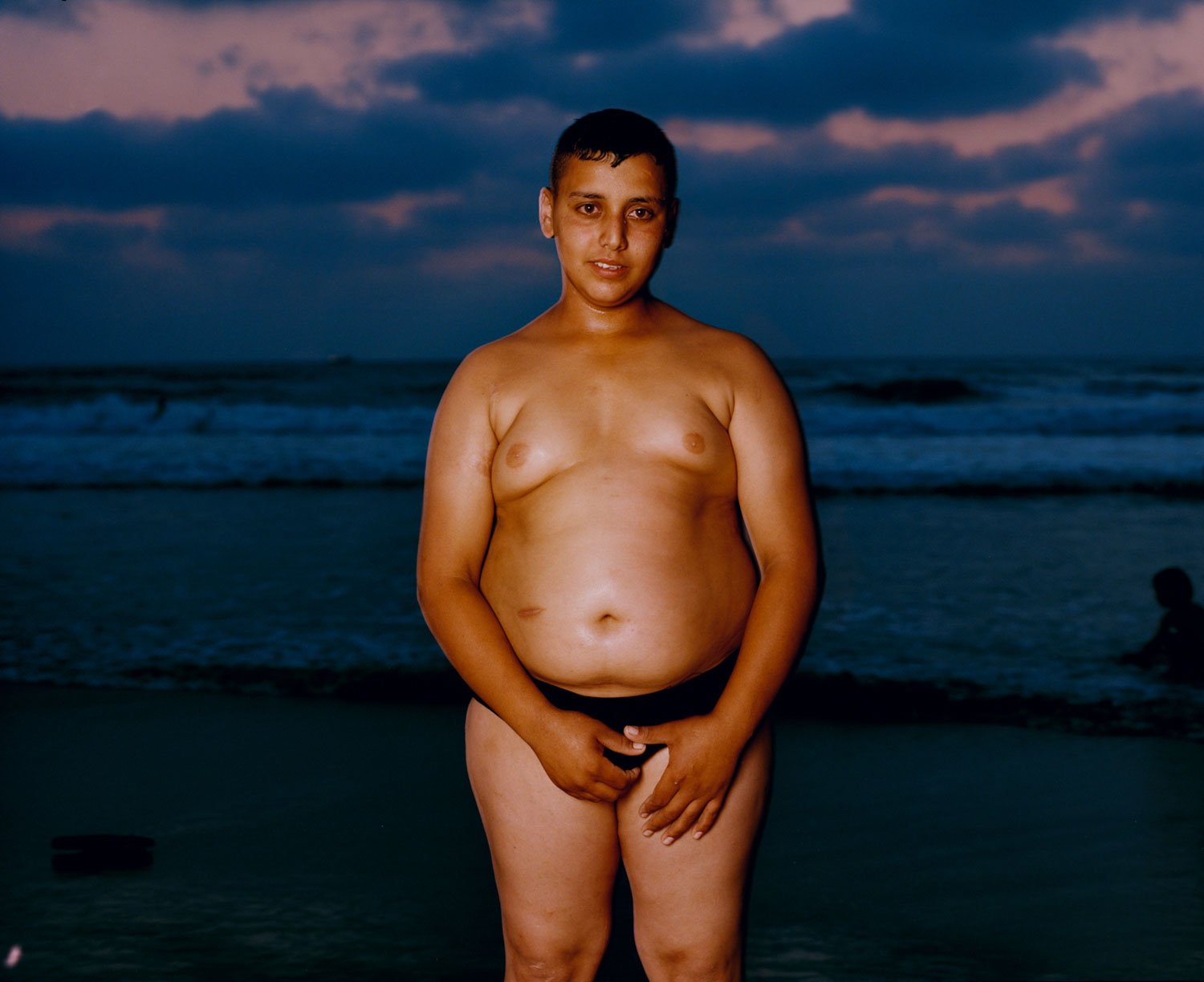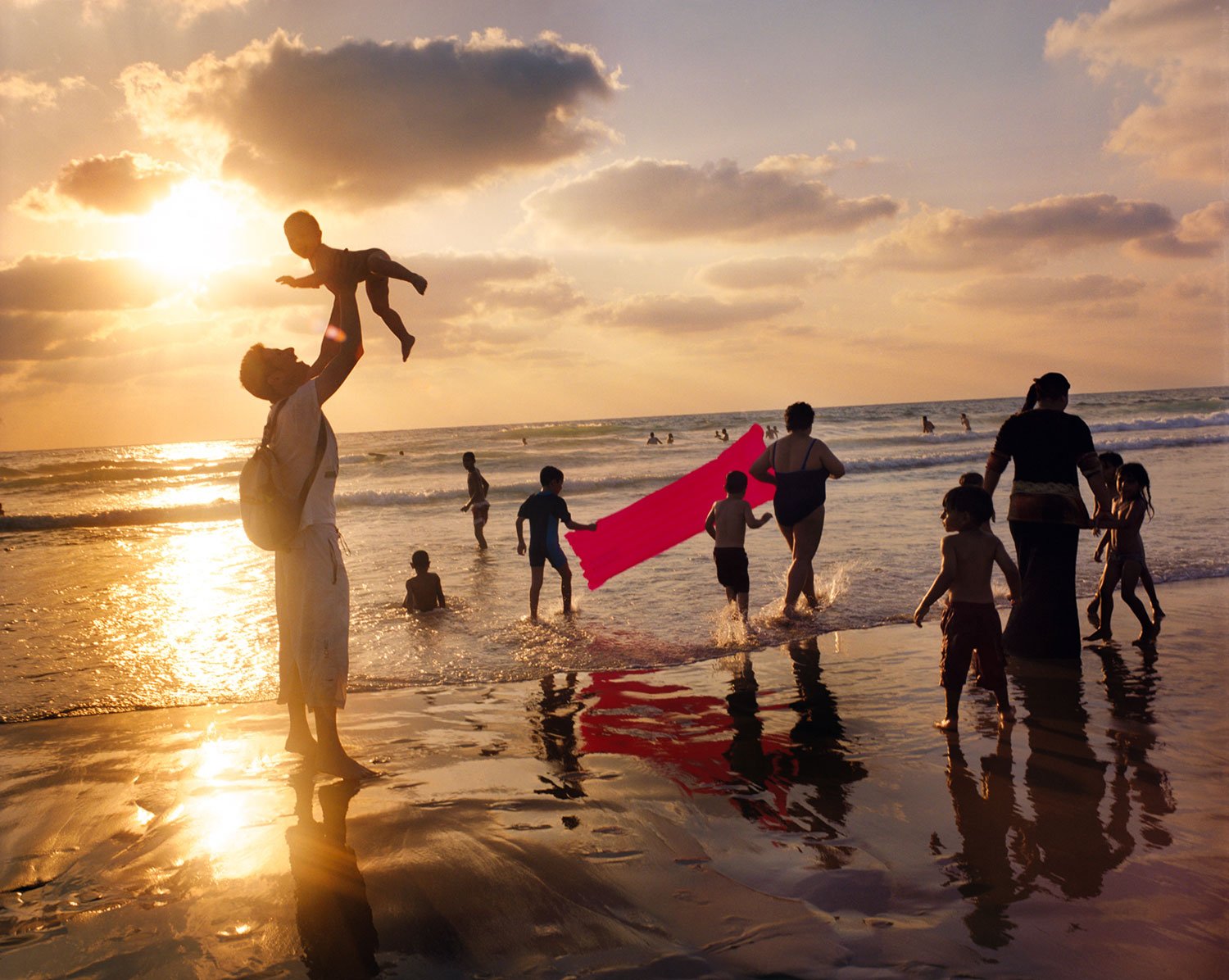Tel Aviv Beach
“Every Jew has two requests of God: a place in paradise in the next world, and a place on the Tel Aviv beach in this world,” wrote Sholem Asch, the Polish-born novelist, in 1937. Stretching five kilometers from its southern tip at the old port city of Jaffa to the new cluster of high rise hotels and condos at its northern end, Tel Aviv’s beach (or Tayelet as it’s called in Hebrew) probably looked a little different in Asch’s day. But I think of him as part of a long legacy of both travelers and natives who have sought refuge in those sands from Israel’s political dramas, which can gush like a Texas oil well. At the beach, I discovered Israel in all its vitality, without the conflict.
I have been photographing in Israel for almost ten years. The beach is where I go to escape. I walk the full expanse of the shoreline, stopping every few feet to capture a moment. Others are there to escape, too: an eclectic mix of people—old, young, skinny, zaftig and maimed—interact there unlike anywhere else. Arab and Orthodox Jewish women, covered nearly head-to-toe, splash ecstatically in the waves. Suntanned Israeli men parade like peacocks in tiny speedos and large jewelry. Bespectacled, pre-pubescent Americans on teen tours, relatively new Russian emigrants, even newer Ethiopians, and the newest residents—exhausted Filipino or Chinese foreign workers. Everyone is there, and for the same purpose: to take a break.
This is a nation filled with serious conversations and serious consequences, bad omens from the past and dire warnings of the future. But not on this sliver of sand. Only Tel Aviv’s beach has that unique ability to free Israelis from the yoke of daily turmoil, letting them frolic, flaunt and laugh—a joyful, if temporary, exhalation under a pure, blue sky. The beach, I’ve come to realize, is where the country comes to breathe.


